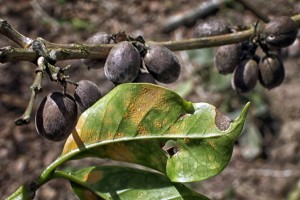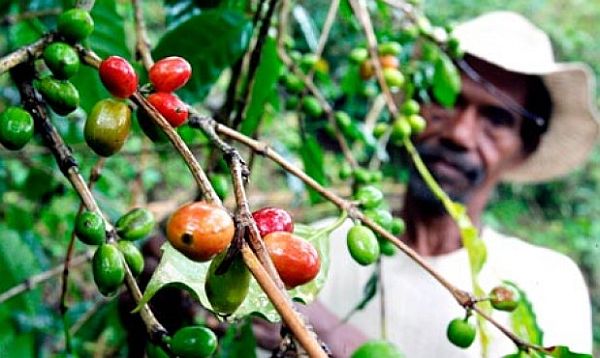Mexico City, Mexico - Mexico's Congress is considering spending $212 million to help coffee farmers hit by a major outbreak of leaf rust and falling prices, a senior lawmaker said. The funding would aim to provide farmers with subsidies, replace ageing plantations, and give new credit and training opportunities following the spread of the tree-killing fungus roya.
"Those of us on the agriculture committee are budgeting 2.75 billion pesos to be able to address all of these questions," Hector Narcia, chairman of the coffee sub-committee from Mexico's lower house's agriculture committee, said. "What we're going to do is convince our colleagues to approve a significant budget. If that doesn't happen, we are practically sounding the death knell for this product."
Coffee prices have fallen by about half from a mid-2011 peak, leaving farmers to face a double-whammy of less revenue on top of depressed output from infected trees.
The deadly fungus which has hit Central America particularly hard this year kills leaves on coffee trees - with weakened plants producing less coffee. Between them, Mexico and Central America account for more than a fifth of global output of arabica beans.
Coffee farmers also need affordable insurance and price hedges, which the proposed funds could provide, said Narcia, a member of Mexico's Green Party, coalition partners of President Enrique Pena Nieto's Institutional Revolutionary Party.
 |
| Coffea Arabica, the species most prone to rust, accounts for 97% of Mexico's Coffee plantations |
The finance ministry submitted the 2014 budget proposal to the lower house in early September, and Congress is due to approve the funding plan for next year by around mid-November.
Narcia said he and other members of Congress had been touring major coffee-producing areas, and that the government's campaign launched in February to prevent coffee leaf rust has had some success.
Price Pressures
Gabriel Barreda, head of Mexico's national coffee association AMECAFE, said in a separate interview that he strongly supports subsidies for farmers and that the lobby will present its own budget request in "less than twenty days."
Mexico's southern Chiapas state is the country's top coffee producer, and also most affected by roya, Barreda said.
Chiapas is home to about 36 percent of Mexico's coffee-farming land. About 16 percent of the state's farms, or almost 100,000 acres, are currently blighted by roya, said Greens lawmaker Narcia, himself a native of the state.
Narcia said about a quarter of the country's entire 1.7 million acres of coffee plantations had been infected by roya. Government subsidies have been used in other coffee-producing countries in the region - such as Colombia - and they help producers to remain competitive, dealers say.
Producers in Colombia, the world's top supplier of washed arabica coffee, lowered their price premium for so-called usual good quality (UGQ) beans to an 11-month low last week as they drew in more business ahead of their biggest crop in six years.
Latin American growers are already suffering from low coffee prices, which are believed to be below the cost of production in several countries. Abundant global supplies have pushed the arabica market to the lowest in more than four years.


